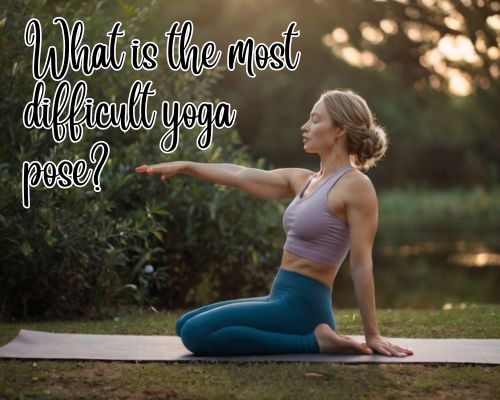What Is the Most Difficult Yoga Pose?
Yoga has been practiced for thousands of years, promoting physical, mental, and spiritual well-being. While many poses are accessible to beginners, some require extreme flexibility, strength, and years of dedication to master. If you’ve ever wondered, what is the most difficult yoga pose?, the answer isn’t straightforward, as different yogis find different poses challenging. However, one of the most universally agreed-upon challenging poses is Eka Pada Sirsasana (Leg Behind the Head Pose).

Understanding Advanced Yoga Poses
Jane Benson of Bikram Yoga Mornington has to say that yoga is not just about flexibility—it also requires balance, endurance, and mental resilience. Advanced yoga postures demand patience and consistency. Many challenging asanas involve deep backbends, arm balances, and contortions that push the body’s limits. Some of the hardest yoga poses include:
- Eka Pada Sirsasana (Leg Behind Head Pose)
- Tittibhasana (Firefly Pose)
- Mayurasana (Peacock Pose)
- Kapotasana (King Pigeon Pose)
- Sirsasana (Headstand variations)
These poses are not just about strength; they require mastery of breath control (pranayama) and intense concentration.
Why Is Eka Pada Sirsasana So Challenging?
Eka Pada Sirsasana is often considered one of the most difficult yoga poses due to the combination of deep hip flexibility, hamstring length, and spinal mobility it requires. Here’s why it stands out:
- Hip Mobility: The pose demands extreme openness in the hip flexors and rotators, which takes years to develop.
- Core Strength: It requires substantial core engagement to maintain balance and posture.
- Spinal Flexibility: A mobile spine is necessary to avoid strain and injury while performing this pose.
- Breath Control: Holding the pose without compromising breathwork is essential to avoid tension and discomfort.
Practicing preparatory poses like Lizard Pose (Utthan Pristhasana) and Pigeon Pose (Eka Pada Rajakapotasana) can gradually build the flexibility needed for this pose.
The Role of Yoga in Mornington, Australia
Mornington, Australia, is known for its wellness culture, coastal retreats, and vibrant yoga community. With numerous yoga studios, such as Mornington Yoga Centre and Coastal Flow Yoga, locals and visitors alike can engage in Vinyasa, Hatha, and Ashtanga classes tailored to all levels. The serene beaches and parks in the area, like Mills Beach and Mornington Peninsula National Park, provide ideal settings for outdoor yoga sessions. Advanced practitioners often practice challenging poses in these natural surroundings, taking advantage of the calming environment.
How to Train for Difficult Yoga Poses
If you are working toward mastering advanced yoga poses, follow these steps:
1. Build Flexibility and Strength
Poses like Downward Dog (Adho Mukha Svanasana), Pigeon Pose, and Lizard Pose are essential for developing hip and hamstring flexibility.
2. Improve Balance and Core Stability
Engaging in Boat Pose (Navasana) and Plank Variations strengthens the core, which is crucial for arm balances and inversions.
3. Seek Professional Guidance
Attending advanced classes at yoga studios in Mornington, such as Seaglass Yoga or Ocean Flow Yoga, can provide hands-on adjustments and corrections.
4. Practice Mindfulness and Patience
Progress in yoga isn’t just about physical ability—it’s also about mental resilience. Meditation and breathwork help maintain focus when attempting difficult asanas.
For more, go to Bikram Yoga Mornington.
Final Thoughts
While Eka Pada Sirsasana is often considered the most difficult yoga pose, difficulty varies depending on individual strength, flexibility, and practice history. If you’re in Mornington, Australia, and looking to challenge yourself, the local yoga community offers an inspiring space to deepen your practice. Whether you’re training indoors at a studio or outdoors near the coastline, consistent effort and mindful progression will help you master even the toughest poses.
If you’re interested in taking your yoga journey further, exploring Mornington’s yoga scene can provide the perfect environment for growth and self-discovery.